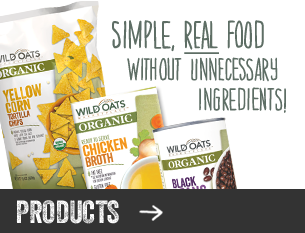The past five years, I have made my own version of Emeril Lagasse’s roasted parsnip soup recipe to as a first course of while entertaining during the holidays. Having soup before a big meal helps curb appetite and may prevent you from over indulging as the delicious meal goes on, and on, and on, while you gab and catch up on life with close friends and family.
The original recipe is a combination of two soups: roasted butternut squash soup and the parsnip soup, poured side by side in a bowl, and garnished with tarragon oil. It looks beautiful this way, but really, who has time to make two soups? I’m sure it’s delicious when they are combined, but the parsnip soup alone is plenty enough to get taste buds going. I also omit the tarragon oil because personally I don’t like the taste of tarragon at that much, and it cuts down on added fat.
I eat a lot of butternut squash during the Fall, but rarely do I think to purchase parsnips even though they are readily available this time of year. For some reason, I forget about them until Thanksgiving rolls around and it’s time to make the soup. It’s quite a shame because they are very nutritious and easy to prepare. They have a ton of fiber, vitamins and minerals, especially potassium, and are rich in antioxidants.
I love this recipe because it uses a lot of the same ingredients you already have in the kitchen during the holidays: onions, carrots, celery, and garlic. It’s also a good recipe to learn about parsnips if you are unfamiliar with them.
Parsnips look like carrots but are white. Prepare them just like you would a carrot; and you can substitute them for carrots in recipes for a less sweet, more savory and spicy flavor.
Emeril’s Version:
(I usually double this recipe to have leftovers)
Roasted Parsnip Soup:
- 1 pound parsnip, peeled and roughly chopped
- 3 tablespoons olive oil
- 3/4 teaspoon salt
- 1/4 teaspoon freshly cracked white pepper
- 1/4 cup diced ham
- 1 cup small dice onion
- 1/2 cup small dice carrots
- 1/2 cup small dice celery
- 1/2 cup small dice leeks
- 2 tablespoons minced shallots
- 1 tablespoon minced garlic
- 2 teaspoons white vinegar
- 11/2 quarts chicken stock
- 2 teaspoons honey
- 1 teaspoon freshly chopped thyme leaves
- 1/2 cup heavy cream
- Tarragon Oil:
- 1/2 cup tarragon leaves
- 1/2 cup olive oil
Directions
Preheat the oven to 425 degrees F.
Place the chopped squash in a medium-size mixing bowl. Drizzle the squash with 2 tablespoons of olive oil and season with 1/4 teaspoon of salt and 1/8 teaspoon black pepper. Line a sheet pan with parchment paper or aluminum foil and place the squash on top of the sheet pan. Set the sheet pan into the oven and roast for 30 minutes, or until the squash is lightly caramelized and tender.
Remove the squash from the oven and set aside. Place a 1-gallon saucepan over medium high heat and add the remaining 1 tablespoon of olive oil to the pan and render the Italian sausage. Cook, stirring often until the meat is caramelized and has released most of its fat, about 3 minutes. Add the onions, carrots, celery and leeks in the pan and sweat, stirring often for 5 to 7 minutes. Add the shallots and garlic to the pan and sweat for 1 minute stirring continuously. Deglaze the pan with the vinegar and add the chicken stock to the pan. Place the squash in the pan with the maple syrup and sage.
Bring the pan to a boil and reduce to a simmer. Continue to cook the soup for 30 minutes, or until the vegetables are all tender. Use an immersion blender to puree the soup to a smooth consistency and velvety texture. Alternately, you can puree the soup in batches using a blender. Taste the soup and re-season if necessary with 1/2 teaspoon of salt and 1/8 teaspoon pepper. Keep warm until serving.
Roasted Parsnip Soup:
Preheat the oven to 425 degrees F.
Place the chopped parsnips into a medium-size mixing bowl. Drizzle the parsnips with 2 tablespoons of olive oil and season with 1/4 teaspoon of salt and 1/8 teaspoon of fresh cracked white pepper. Line a sheet pan with parchment paper or aluminum foil and place the parsnips on top of the sheet pan. Set the sheet pan into the oven and roast for 30 to 35 minutes, or until the parsnips are lightly caramelized and tender.
Remove the parsnips from the oven and set aside. Place a 1-gallon saucepan over medium high heat. Add the remaining tablespoon of olive oil to the pan and caramelize the ham. Cook, stirring often until the meat is caramelized, about 3 minutes. Add the onions, carrots, celery and leeks in the pan and sweat, stirring often for 5 to 7 minutes. Add the shallots and garlic to the pan and sweat for 1 minute stirring continuously. Deglaze the pan with the vinegar and add the chicken stock to the pan. Place the parsnips in the pan with the honey and thyme.
Bring the pan to a boil and reduce to a simmer. Continue to cook the soup for 30 minutes, or until the vegetables are all tender. Use an immersion blender to puree the soup to a smooth consistency and velvety texture. Alternately, you can puree the soup in batches using a blender. Taste the soup and re-season if necessary with 1/2 teaspoon salt and 1/8 teaspoon pepper. Add the cream to the soup and return the soup to a clean saucepan and keep warm until ready to serve.
Yield: about 1 1/2 quarts
Prep Time: 30 minutes
Cook Time: 1 hour 10 minutes
Read more at: http://www.foodnetwork.com/recipes/emeril-lagasse/roasted-butternut-squash-soup-and-roasted-parsnip-soup-recipe.html?oc=linkback
My version: To cut down on fat, I use only a touch of heavy cream. Or, you don’t have to add it at all- the soup has a rich, layered flavor even without it. Also, I use a reduced sodium chicken broth to cut down on salt. Most holiday meals have a whole day’s worth of fat and sodium in them, and I still impress my guests with my savvy skills when I serve this delightful variation that starts the meal off healthfully.


 Contact us
Contact us





